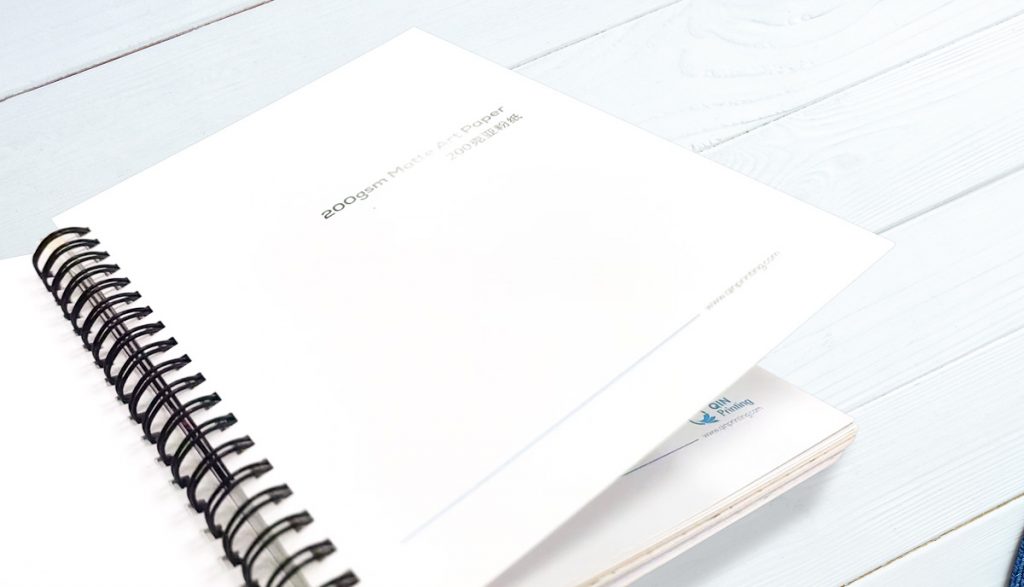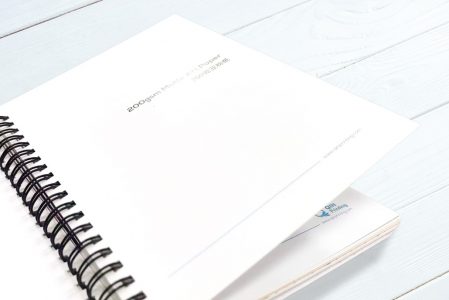
Is paper weight the same as thickness?
While we strive to make your experience of printing with us as smooth and easy as possible, it’s inevitable that several technical terms and processes might confuse you. One of the most important decisions you must make when printing anything—a flyer, brochure, booklet, novel, or catalog, for example—is the type and thickness of paper to use. And this can be even more confusing if you need to select more than one kind—for the cover, interior pages, and endpapers of a hardback coffee table book, say.
While it’s possible to measure the thickness of paper in fractions of a millimetre or an inch, the industry standard is to measure the thickness of paper stock in terms of its weight. It actually makes perfect sense to do it this way, but the reasons may not seem obvious! That said, as we’ll discover in a moment, weight to thickness isn’t always a direct and proportionate calculation. So, if this seems confusing, we’ll explain what it’s all about.
What is paper weight?
The printing industry uses several measures of the thickness of paper. These are divided into weights and direct measures. You’ll come across paper weight/thickness given in terms of the following metrics:
- gsm (grams-per-meter)
- mic (microns)
- lb (pounds)
- pt (points)
In part the differences are geographical and historical (so, GSM is used almost everywhere except the USA, where lb is the standard measure) but also technical, a measure being chosen based on the needs and specifications of the process and product involved. But let’s look at each of these measures in turn.
What does ‘gsm’ mean?
‘Gsm’ is an abbreviation of ‘grams-per-square-metre’. So, it’s a measure of the weight of a sheet of paper with dimensions of one square metre. There’s a reason for this. It’s because the suppliers of wood pulp (the basic ingredient in most paper products) use weight as they’re dealing in bulk; but the paper mills (which turn the raw bulk materials into flat-pressed and rolled sheets) operate in terms of area. As a rule of thumb, heavier stock has more wood pulp in it. A 250-gsm sheet and a 100-gsm sheet cover the same area (1m2) but one is heavier than the other. And as a rule, if there’s more material in the same area, it’s likely to be thicker. Makes sense, right?
What does ‘mic’ mean?
‘Mic’ stands for ‘microns’. One micron is equal to one thousandth of a millimetre (which is incredibly thin!) So, 150 mic paper would be equivalent to 0.15 mm thick. As you might imagine, for most day-to-day applications, this measure is less common as it’s more suited to measure very thin paper stock, usually limited to specific industrial or scientific purposes and not relevant to most enterprise printing jobs.
What does ‘pounds’ or ‘lb’ mean?
The ‘pound’ or ‘lb’ is the old “imperial” measurement of weight, still used in the US printing industry for determining the relative thickness of paper. Most stock weighs between 20 lb and 140 lb. Once a stock weighs more than 50 lb or so, it’s usually referred to as ‘card’. As weighing paper one sheet at a time would be a bit bonkers, these weights—whether in gsm or lb—are derived in the paper mills by weighing a 500-sheet block (called a ‘ream’). So, you won’t get a single sheet of cut paper—say A4 or legal pad size—that weighs 30 lbs! But it’s a standard indicator of the thickness of the paper.
What do ‘points’ or ‘pt’ mean?
No, not prizes! Points are a direct measurement of paper thickness. It’s extremely accurate, using high-caliber scientific instruments to generate the measures. It’s possible to measure with an accuracy equal to one thousandth of an inch. So, ’12 pt’ paper stock would be twelve thousandths of an inch thick. Again, while some printers may use points, it’s not common in most enterprise operations.
Are weights and thickness directly proportional?
The short answer to this question is, no. Much depends on the amount and type of refining or bulking material that has gone into the manufacture of the paper. So, a denser stock could be thicker than a less dense stock even if it weighs the same or less. But in real-life terms, that’s really splitting hairs. While weight alone will only be a guideline to the thickness of paper stock, decades of experience in the industry shows that it’s a pretty good guideline and plenty sufficient for the levels of accuracy and precision needed for most printing jobs.
Why is paper thickness and weight important?
The weight and thickness of the paper stock you choose for a given project matters for both technical, aesthetic, practical, and economic reasons. Technically, you may need a certain weight of paper to support a particular technique such as foil stamping or die-cutting, or to make up the required minimum spine thickness for a specific binding style. From an aesthetic perspective, a high-end glossy catalog will certainly demand a heavier coated paper stock for the cover and interior pages than a basic flyer or a comic book. In practical terms, you’ll often need to balance the weight of the stock against the number of pages in your book to stop it getting too bulky or to keep a brochure easy to slip into an envelope for mailing. Likewise, thinner paper is generally cheaper and costs less to distribute and deliver.
Other Paper Factors to Consider
We also divide paper stock into cover, text, and offset papers. Both cover and text papers are coated, usually with a gloss or matte finish. Offset paper is uncoated. Each has a different range of applications to which it is best suited. So, for example, if you want to print high-resolution photographs in full-color reproduction on your pages, you’ll want a heavier gloss coated cover paper; if you are printing the interior text-only of a paperback novel, then you might choose uncoated offset paper for the interior and a matte coated cover paper for the binding.
Talk to us!
We hope that by now you have a better grasp of the relationship between paper weight and thickness and the reasons and methods we use to measure them. In the end, which paper you choose for your printing needs is down to you and will often be a compromise between what may be ideal from a technical viewpoint and what may be possible for practical reasons and the size of your budget. But the best thing to do if you are not sure, is talk to us. We have over a quarter century of experience in the printing industry and what we don’t know about paper is nobody’s business. Get in touch by telephone, email, Skype, or our handy online contact form, and we’ll be happy to listen to what you have in mind and discuss the best paper choices for you.


